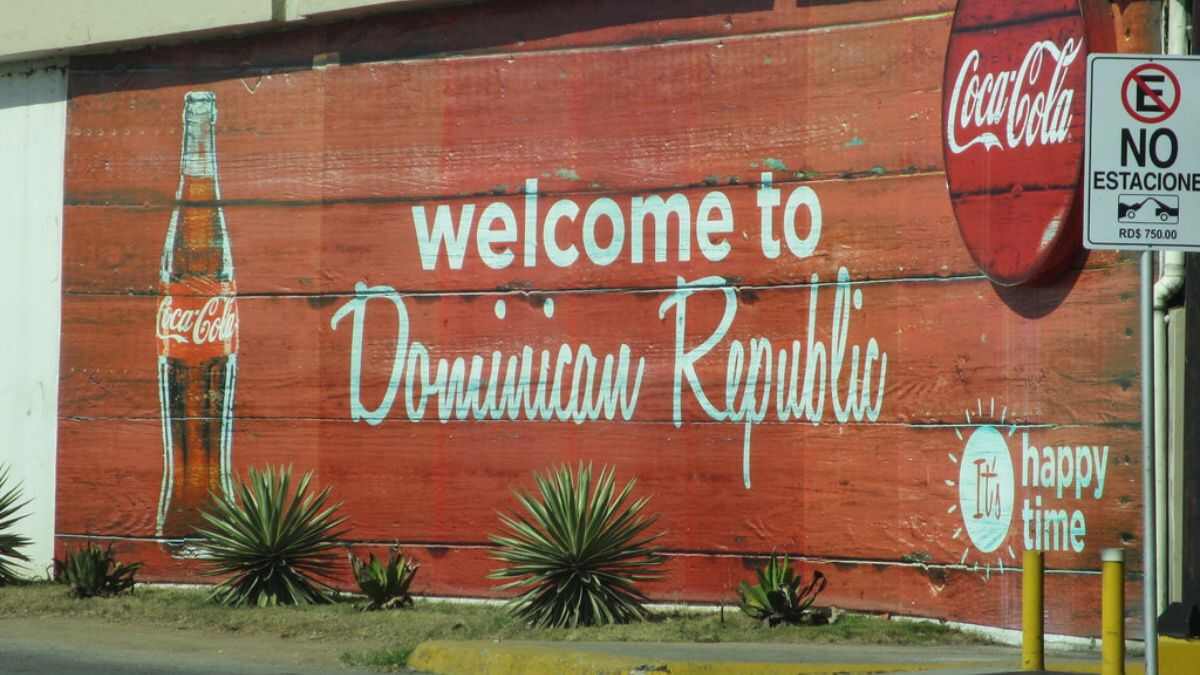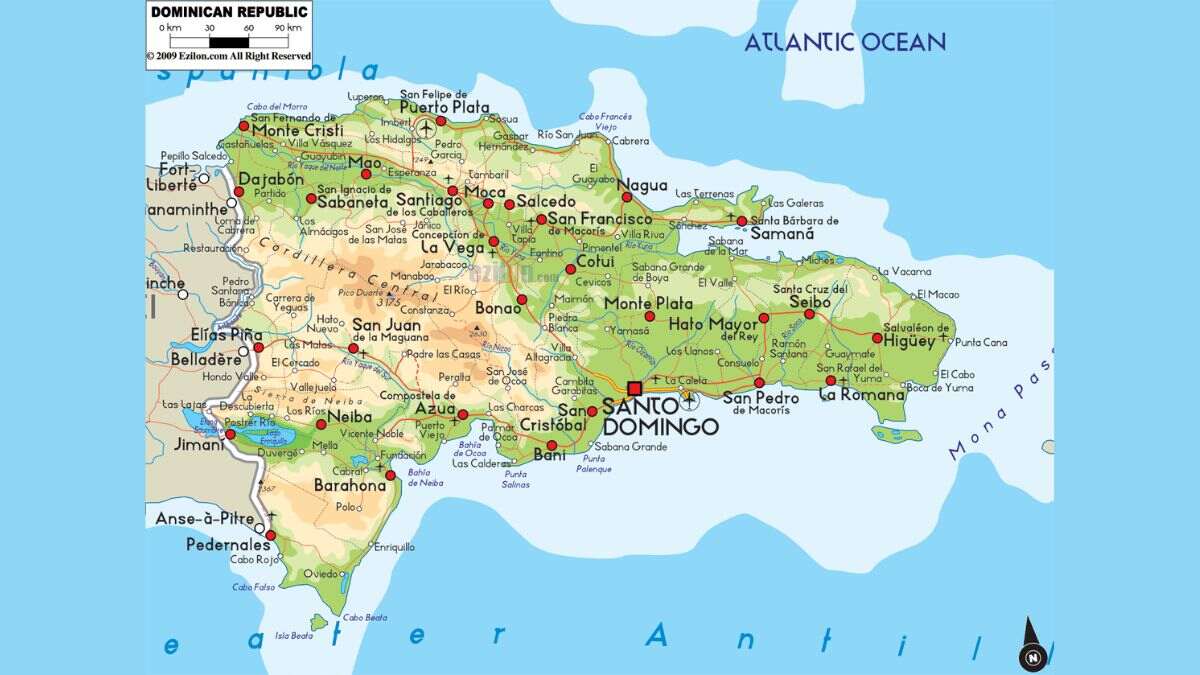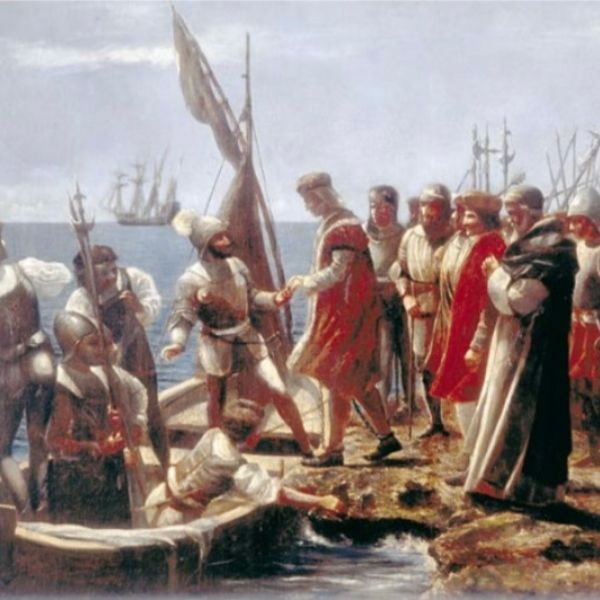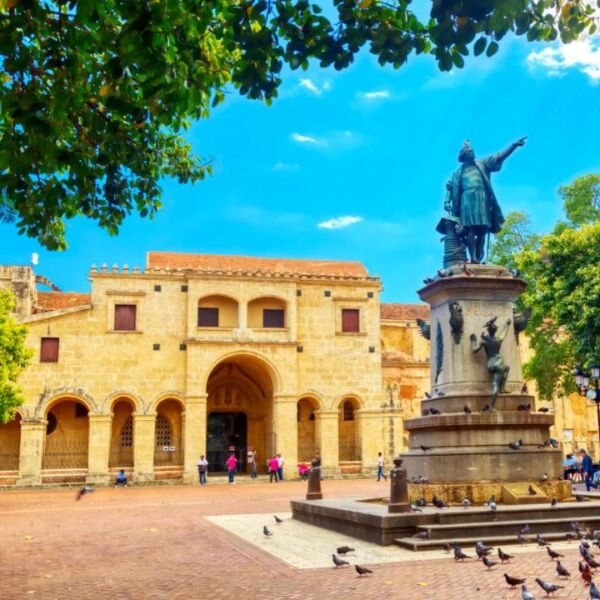Situated in the heart of the Caribbean Sea, the Dominican Republic, officially known as República Dominicana in Spanish, commands the eastern five-eighths of the illustrious Hispaniola island. This island, forming part of the esteemed Greater Antilles archipelago, stands as a testament to nature's grandeur. Bordered by the vast expanse of the Atlantic Ocean to the north, the nation shares this magnificent landmass with its neighbour, Haiti. In this unique arrangement, Hispaniola proudly stands as one of the rare Caribbean islands, alongside Saint Martin, to be governed by two independent nations.

With an expansive territory spanning 48,671 square kilometres (18,792 sq mi), the Dominican Republic stands as the second-largest nation in the Antilles, following the vast expanse of Cuba. Beyond its geographical magnitude, the nation boasts a thriving population, estimated at approximately 11.4 million inhabitants in the year 2024. Among these citizens, around 3.6 million individuals reside within the bustling metropolitan hub of Santo Domingo, the esteemed capital city that serves as the vibrant heart of the nation.
ALSO READ| California Map: Official Image, Population and Other Important Details
Dominican Republic Map And Geography
The Dominican Republic boasts both the loftiest peaks and the deepest troughs in the entire West Indies, rendering it a land of unparalleled geographical diversity. Its principal mountain ranges and expansive, fecund valleys predominantly stretch from the northwest to the southeast.
Here is the map:

To the north lies the Cordillera Septentrional, the most northerly range, casting its imposing shadow over a slender coastal plain irrigated by diminutive rivers like the Balabonico and the Yasica. Descending from the mountain's southern slopes, one encounters the sprawling expanse of the Cibao Valley, a verdant oasis stretching from Manzanillo Bay in the northwest to the eastern reaches of the Samaná Peninsula and the Bay of Samaná. This valley's fertility finds sustenance in the nourishing embrace of two of the nation's principal river systems: the Yaque del Norte, meandering northwestward, and the eastward-flowing Camu-Yuna system.
Dominating the island's landscape, the Cordillera Central, known as the Massif du Nord in Haiti, stands as the most rugged and awe-inspiring feature. In Dominican terrain, its crest averages a staggering elevation of approximately 6,000 feet (1,800 meters) and culminates in the majestic Duarte Peak, soaring to an unparalleled 10,417 feet (3,175 meters), claiming the title of the loftiest summit in the Caribbean. Other notable peaks include Yaque, La Rucilla, Bandera, and Mijo. While tributaries of the Yaque del Norte cascade down the range's northern slopes, its southern flanks are traversed by the Yaque del Sur system, as well as the Ocoa, Nizao, and various other smaller rivers. The San Juan River, a principal tributary of the Yaque del Sur, irrigates the fertile expanse of the San Juan Valley, linking with Haiti's Central Plateau through the upper Artibonite River valley.
Bounding the southern periphery of the San Juan Valley lies the Sierra de Neiba, corresponding to Haiti's Matheux and Trou d'Eau mountains, boasting peaks soaring to approximately 7,200 feet (2,200 meters). Waters coursing down from the Neiba range find their way partly to the Caribbean via the Yaque del Sur system and partly inland, feeding into the saline waters of Lake Enriquillo. This lake, the largest natural expanse of water in the country, stretches some 23 miles (37 kilometres) in length and spans up to 11 miles (18 kilometres) in width, with its surface marking the lowest point in the West Indies, nestled 144 feet (44 meters) below sea level. Overlooking Cape Beata and the arid southwest plain, including the largely barren Pedernales region, lies the Dominican Republic's southernmost range, the Sierra de Baoruco, known as the Massif de la Selle in Haiti.
| Capital and largest city | Santo Domingo |
| Official languages | Spanish |
| Other spoken languages | Haitian Creole, Samaná English |
| Ethnic groups (2021) | 73.9% Mixed 17.8% White 7.8% Black 3.2% other |
| Religion (2018) | 66.7% Christianity 44.3% Catholicism 21.3% Protestantism 1.1% other Christian 29.6% no religion 1.7% other 2.0% unspecified |
| Demonym(s) | Dominican Quisqueyan (colloquial) |
| Government | |
| Type | Unitary Presidential Republic |
| President | Luis Abinader |
| Vice President | Raquel Peña de Antuña |
| Legislature | |
| Type | Congress |
| Upper house | Senate |
| Lower house | Chamber of Deputies |
| Formation | |
| Ephemeral Independence | 1821–1822 |
| First Republic | 1844–1861 |
| Second Republic | 1865–1916 |
| Third Republic | 1924–1965 |
| Fourth Republic | 1966–present |
| Population | |
| 2024 estimate | 11,434,005 (88th) |
| Density | 220/km2 (569.8/sq mi) (65th) |
| GDP (PPP) | 2024 estimate |
| Total | $294.562 billion (64th) |
| Per capita | $27,231 (67th) |
| GDP (nominal) | 2024 estimate |
| Total | $127.913 billion (64th) |
| Per capita | $11,825 (74th) |
| Gini (2020) | 39.6 |
| HDI (2021) | 0.767 high · 80th |
| Currency | Dominican Peso (DOP) |
To the east, the Cordillera Oriental forms the country's less rugged spine, demarcating a slender coastal plain to the north from a broader swath of undulating lowlands to the south, where the majority of the nation's sugarcane thrives. The region's principal rivers all course their way to the Caribbean, among them the Ozama, reaching the coast at Santo Domingo, and the Macorís, Soco, Chavón, and Yuma.
The nation's most fecund alluvial soils are ensconced within the valleys of the Yaque del Norte, Yuna, San Juan, and Yaque del Sur rivers, as well as along the Ozama and various smaller rivers in the southeast. Conversely, the slopes of the mountains are adorned with soils of lesser quality, primarily blanketed in forests and grasslands. Surrounding Lake Enriquillo, salt deposits engender some of the nation's most infertile soils.
ALSO READ| 9 Most Unique Borders in the World
Dominican Republic History
Christopher Columbus's arrival in Hispaniola in 1492 marked a tumultuous era for the indigenous peoples, particularly the Taino, preyed upon by the Caribs. Their village-based societies, focused on agriculture and fishing, contrasted with the advanced civilisations of the Americas. Columbus's attempts at colonisation faced resistance, leading to the establishment of Santo Domingo.
The Spanish imprint on Hispaniola was profound, with the island becoming a focal point of colonial policy. Despite the establishment of institutions like the first cathedral and university, exploitation and cruelty characterised the era, leading to the decimation of the indigenous population.

Hispaniola's fate oscillated between neglect and exploitation. Raids by European powers devastated the island, leading to a division between the Spanish and French spheres. Haitian occupation further shaped the island's history, marked by repression but also social reforms.
The Dominican Republic's journey to independence was tumultuous, marked by caudillos and interventions, including by the United States. Trujillo's brutal dictatorship, lasting until 1961, exemplified this period, followed by a mix of democratic and autocratic rule.
Recent decades saw economic growth and political transitions, from Fernández's tenure to Abinader's election in 2020. Despite challenges like the COVID-19 pandemic, the Dominican Republic continues to navigate its path through history, shaped by its complex past and aspirations for the future.
Dominican Republic Heritage Sites
Within the borders of the Dominican Republic lies a UNESCO World Heritage Site, namely the Colonial City of Santo Domingo. Following Christopher Columbus's historic landing on the island in 1492, Santo Domingo emerged as the epicentre of groundbreaking developments in the Americas. It bore witness to the establishment of pivotal institutions including the first cathedral, hospital, customs house, and university in the New World.

Here is the list of 13 sites inscribed on the Tentative List which is an inventory comprising properties that a State Party intends to evaluate for potential nomination:
- Jacagua, Villa of Santiago - 2001
- Montecristi - 2001
- Archaeological and Historical National Park of Pueblo Viejo, La Vega - 2001
- Historical Centre of Puerto Plata - 2001
- City of Azúa de Compostela - 2001
- Sanate Sugar Mill [Ruta de Los Ingenios] - 2002
- Nuestra Señora de Monte Alegre or la Duquesa Sugar Mill [Ruta de Los Ingenios] - 2002
- Sitio Arqueológico de la Villa La Isabela - 2018
- Parque Nacional Jaragua - 2018
- Primeros Ingenios Coloniales Azucareros de América - 2018
- Parque Nacional Cotubanamá - 2018
- Santuario de Mamíferos Marinos Bancos de La Plata y Navidad - 2018
- Arte Rupestre Prehispánico en República Dominicana - 2018
Indigenous People of the Dominican Republic
On Christopher Columbus's arrival on Christmas Eve in 1492, the island of Hispaniola was inhabited by indigenous peoples known as Taínos, a subgroup of the Arawak culture.
The term "Taíno" translates to "good" or "noble," reflecting the commendable lifestyle of these inhabitants. They were characterised by their peaceful demeanour, generosity, and cooperative spirit.

However, following Columbus's departure, Spanish settlers found themselves in conflict with the Taínos. Many Taínos were killed by the settlers, while others succumbed to diseases brought by the Europeans. Those who survived endured brutal exploitation in agriculture and mining, forced into labour against their will.
United Confederation of Taíno People
Established in 1998, the United Confederation of Taíno People (UCTP) serves as a representative institution for indigenous communities, with a primary focus on promoting self-determination and safeguarding the human rights, culture, traditions, and ancestral lands of the Taíno and other Indigenous Peoples of the Caribbean.
ALSO READ| List of Top 10 Poorest Countries In Africa 2024
ALSO READ| Important Geographical Facts about Africa
ALSO READ| Top 10 Billionaires in Africa 2023: Check List of Richest People Here
